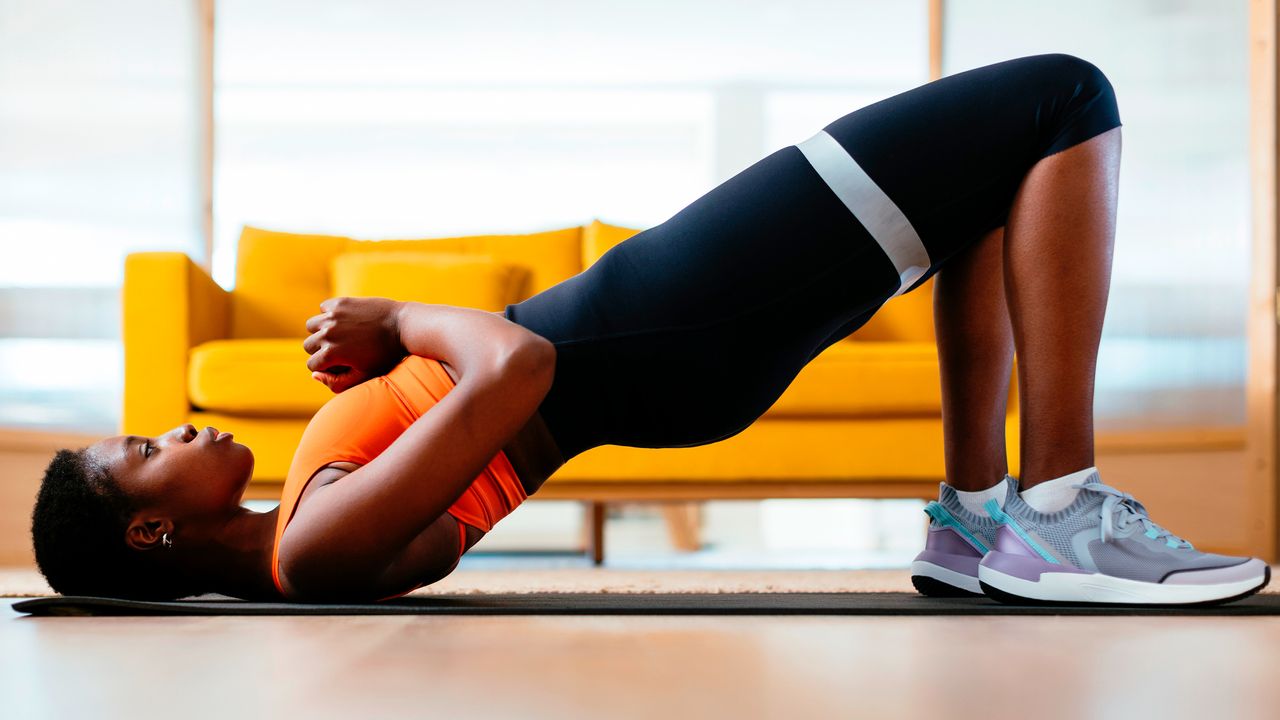
No matter how long you’ve been exercising, there’s always something new to learn. I’m a personal trainer and I’ve been training for more than 20 years, so I was surprised to come across a glute bridge variation I’d never done before.
At Fit&Well, we often highlight the glute bridge as a foundational move. It helps build strength and stability by activating muscles in the buttocks and core, which you need for everyday movement. It also targets the posterior chain (the muscles that run along the back of the body), which needs to be strong if you’re able to tackle more advanced, but supremely effective, moves like the deadlift.
But once you’re comfortable with the standard glute bridge, how do you keep challenging yourself? There are several effective ways to get even more out of the move and none require any fancy equipment.
These three variations are ones I’ve recently been using to take my glute bridge—and core strength—to new levels. The progression starts with the single-leg march—a good first step into advancing your glute bridge. Once you’ve mastered that, move on to the banded march before trying the Pallof press march, which adds more resistance and balance.
1. Glute bridge march
Sets: 2-3 Reps: 6-8 each side
This variation is your first-stage upgrade from the standard glute bridge. The single-leg balance introduces a new challenge requiring hip stability and deeper core engagement. The unilateral glute strength you’ll build is especially beneficial for runners, hikers and anyone working on improving single-leg stability.
How to do it:
- Lie on your back with your knees bent, feet hip-width apart and flat on the floor, and with your arms by your sides.
- Lift your hips so your body forms a straight line from your shoulders to your knees.
- Without letting your hips drop or twist, lift one knee toward your chest.
- Lower it back down and repeat on the other side.
- Continue slowly with control, alternating sides with each rep.
Form tip: If your hips are wobbling or you can’t keep them up, don’t lift our knees as high. Or practice holding the standard glute bridge for longer before progressing.
2. Banded glute bridge march
Sets: 2-3 Reps: 6-8 each side
Placing a short-loop resistance band around your knees makes the outer glutes work harder. This will further improve your hip stability and balance.
How to do it:
- Lie on your back with a short-loop resistance band just above your knees, your knees bent, feet hip-width apart and flat on the floor, and with your arms by your sides.
- Lift your hips so your body forms a straight line from your shoulders to your knees.
- Press your knees out slightly to create tension in the band.
- Without letting your hips drop or twist, lift one knee toward your chest.
- Lower it back down and repeat on the other side.
- Continue slowly with control, alternating sides with each rep.
Form tips: To help stop the band from riding up, bring your knees closer together.
3. Pallof press march
Sets: 2-3 Reps: 8-10
This was a new, challenging move for me. It requires full-body control and stability as your core works hard to resist the rotation from the band and your glutes have to stay strong to maintain level hips.
How to do it:
- Loop a long resistance band around a stable anchor point.
- Lie on your back with your knees bent and feet flat on the floor hip-width apart, side on to the anchor point, holding the band in both hands above your chest with tension in the band.
- Lift your hips so your body forms a straight line from your shoulders to your knees, maintaining tension in the band overhead.
- Without letting your hips drop or twist, lift one knee after the other toward your chest, resisting the sideways pull of the band.
- Pause briefly in between knee lifts to maintain stability.
Form tip: Move slowly to keep your torso as still as possible.







